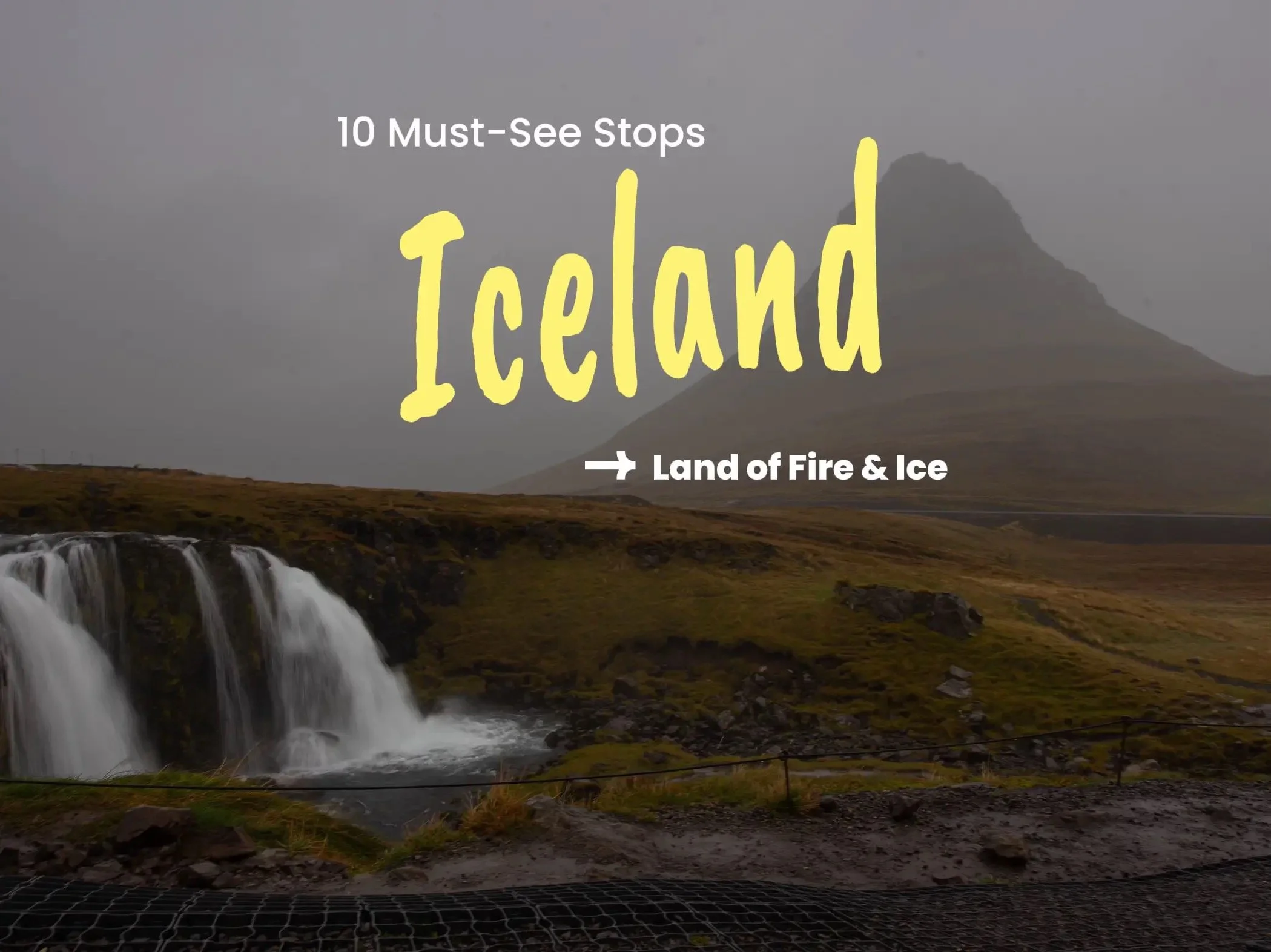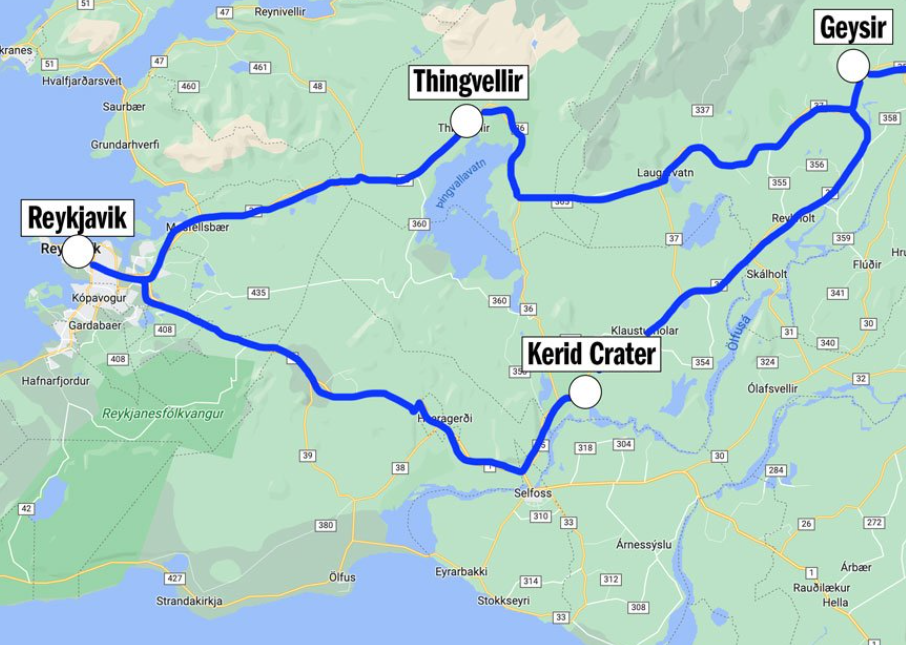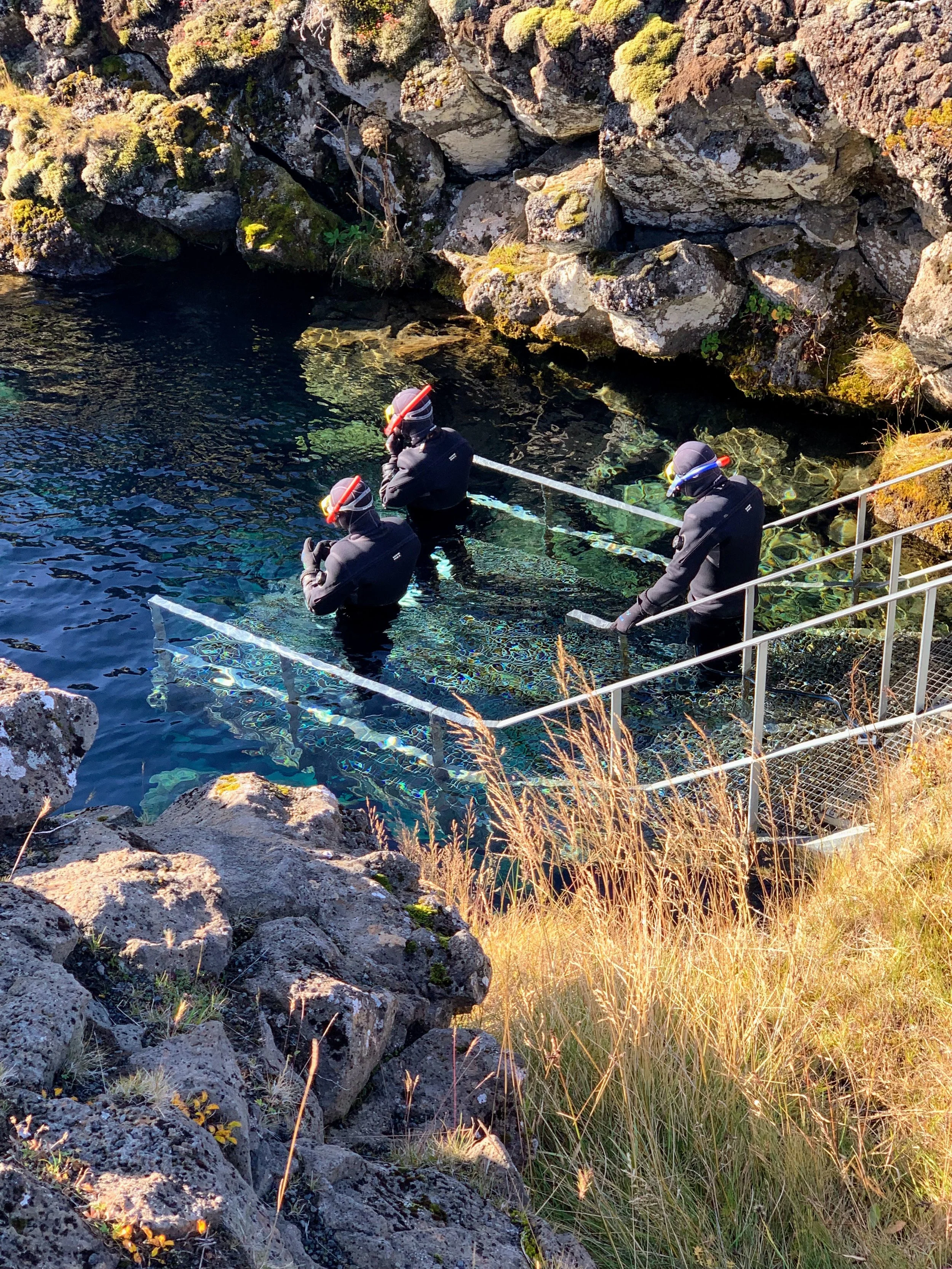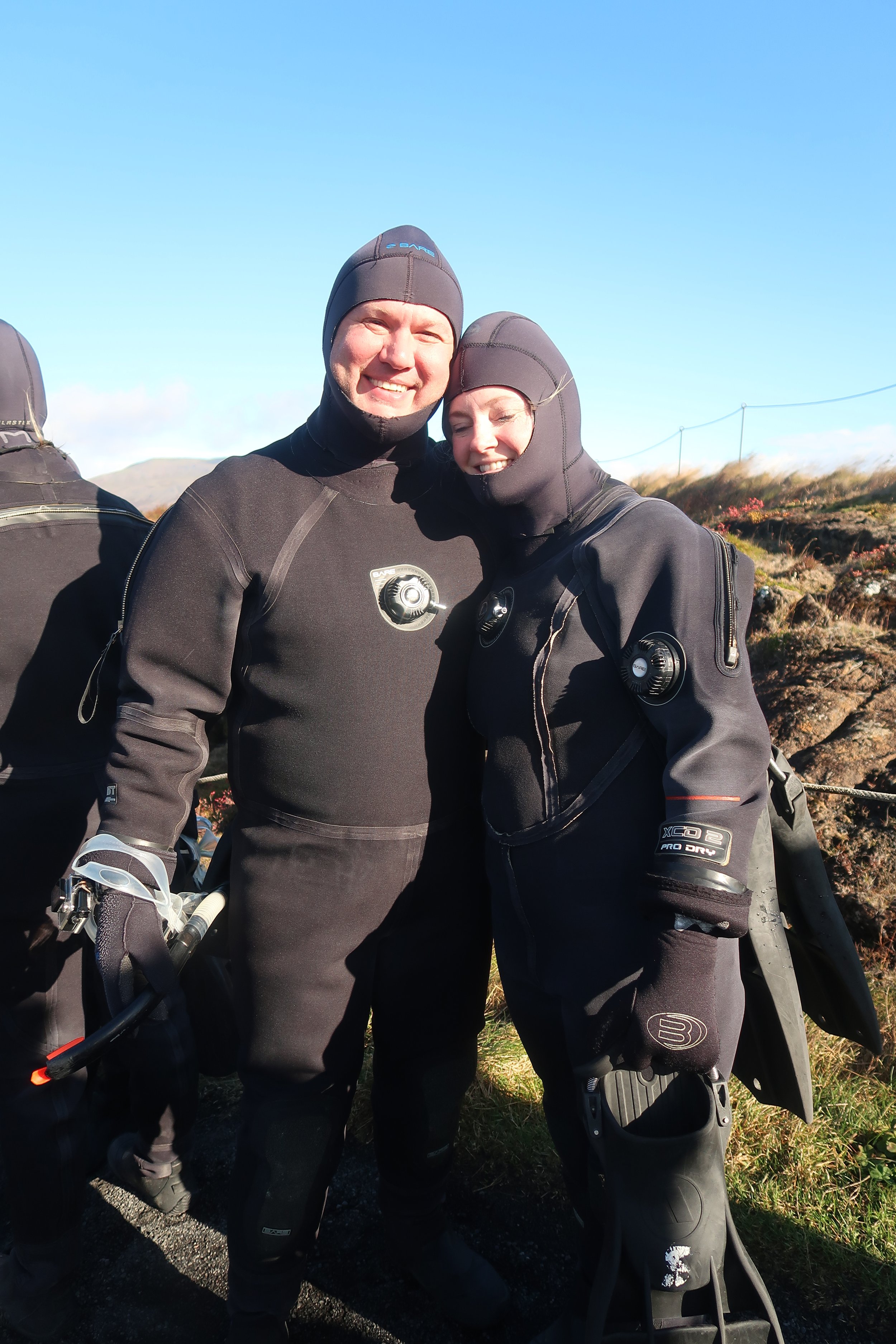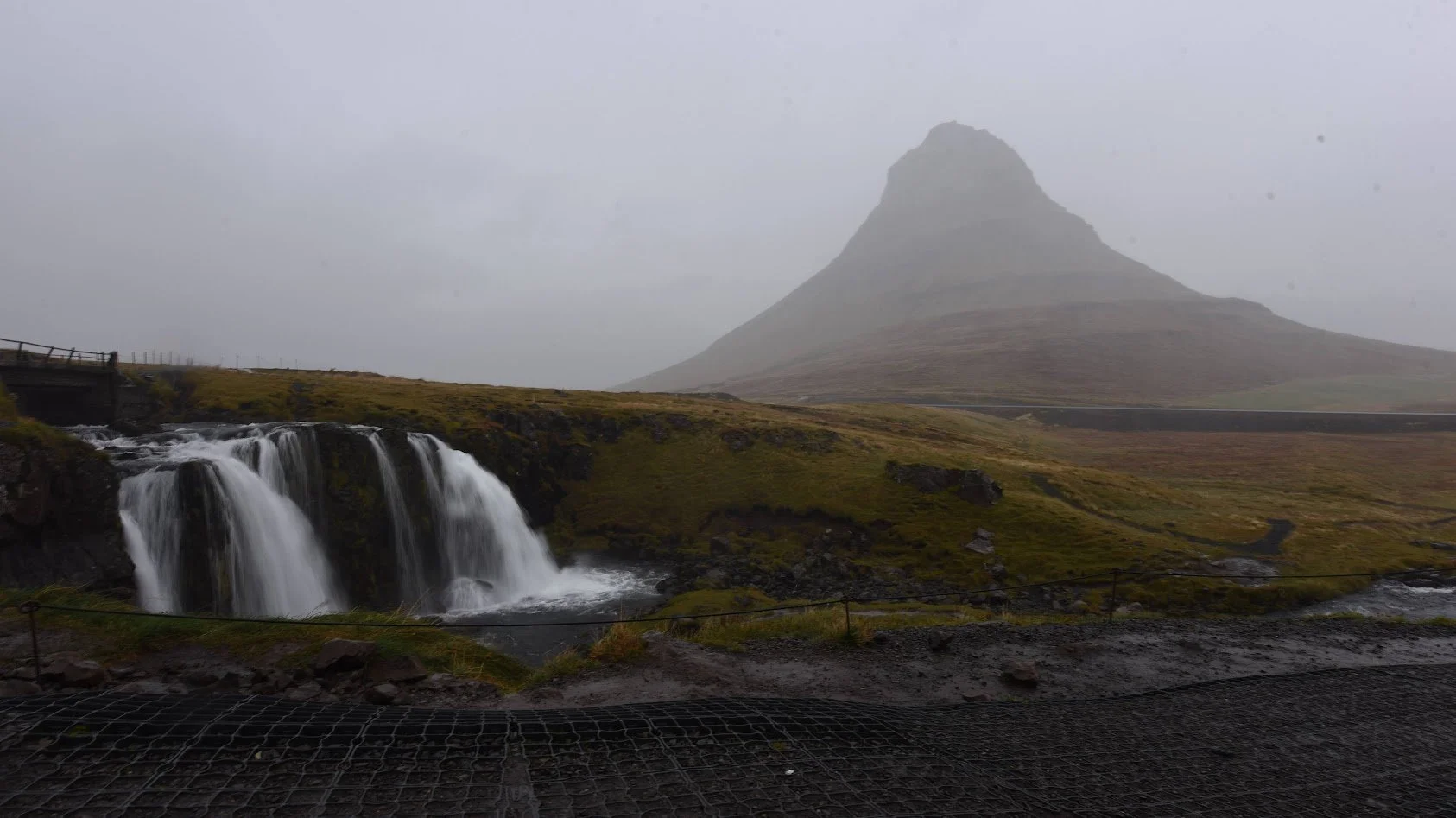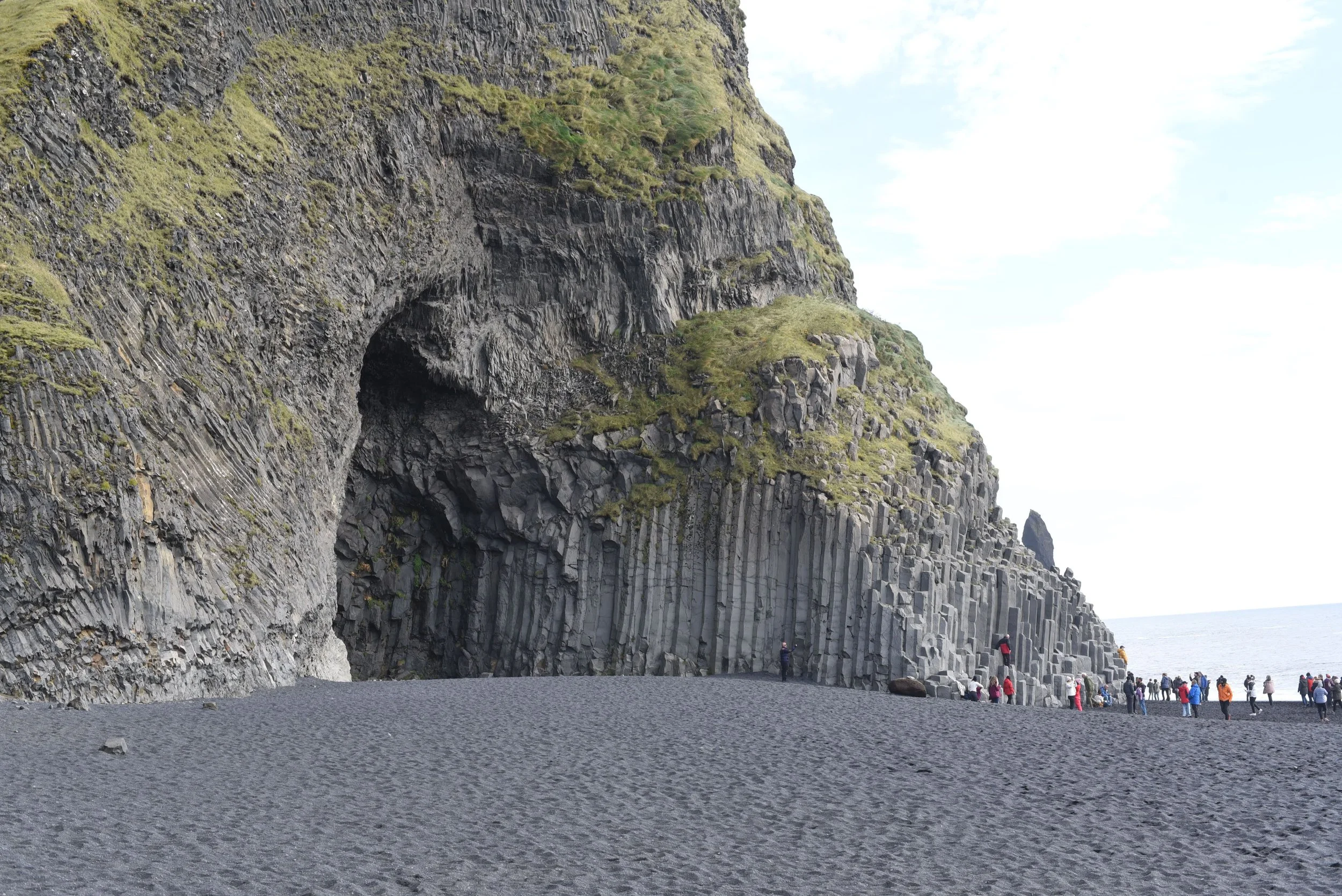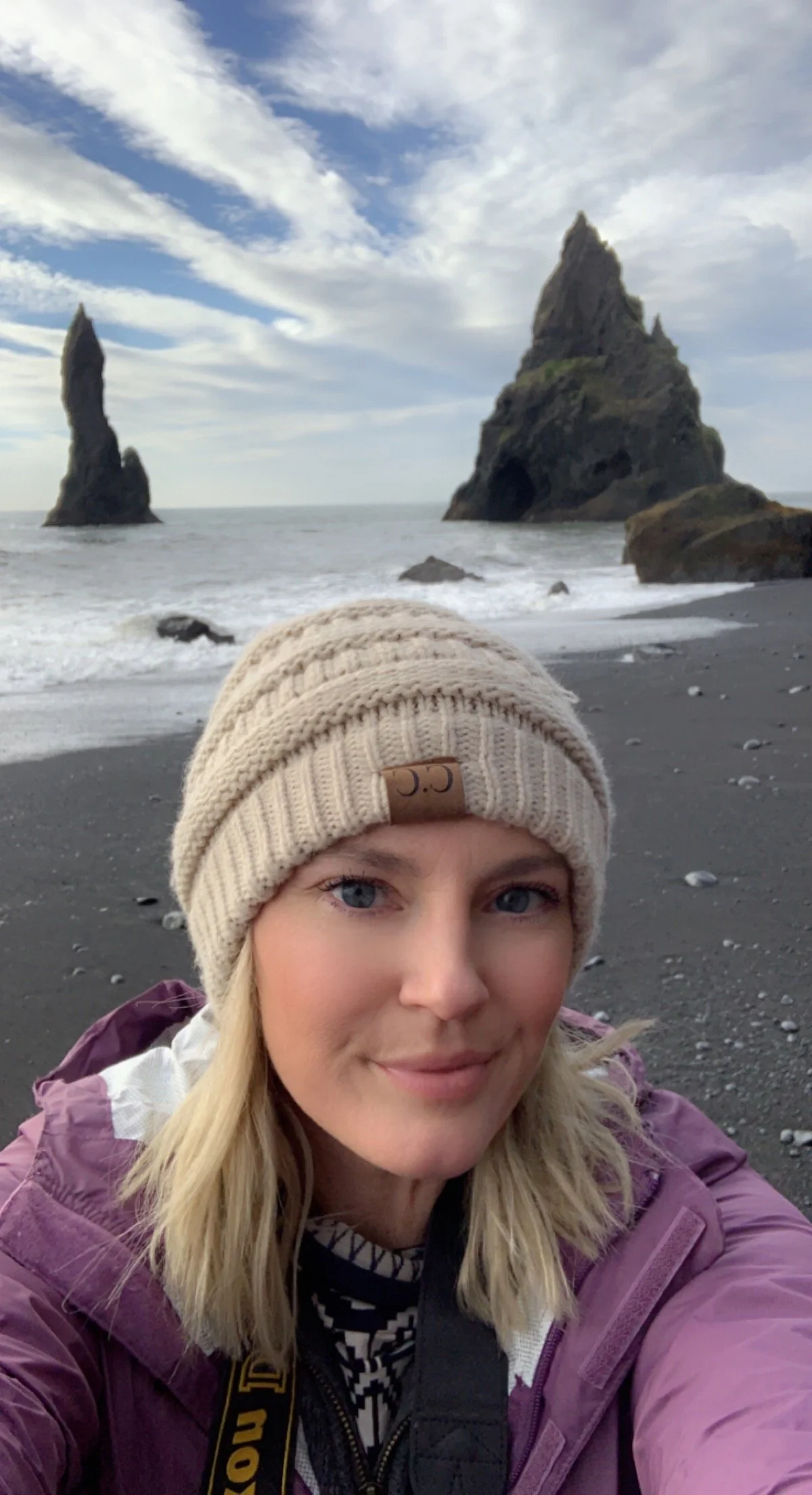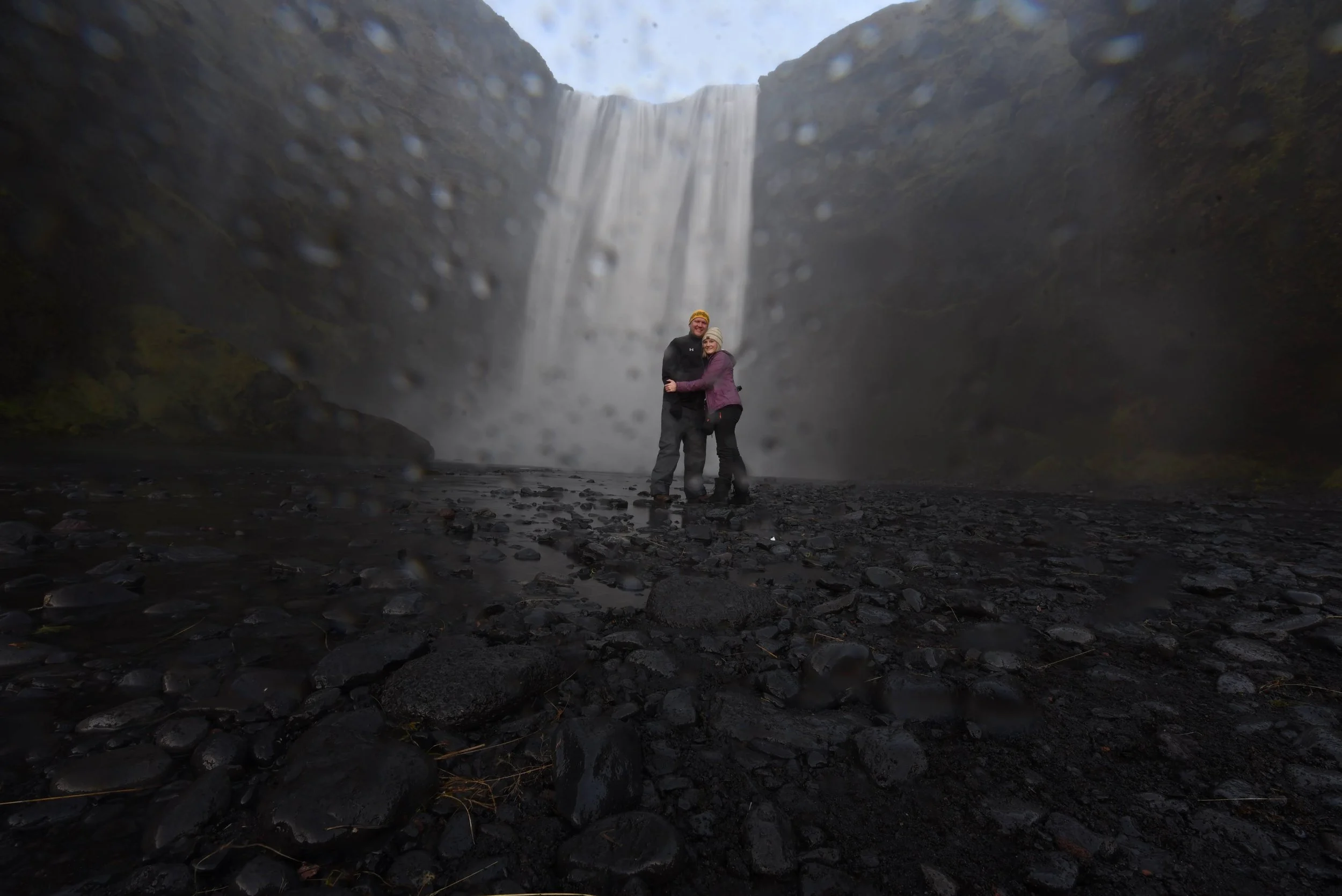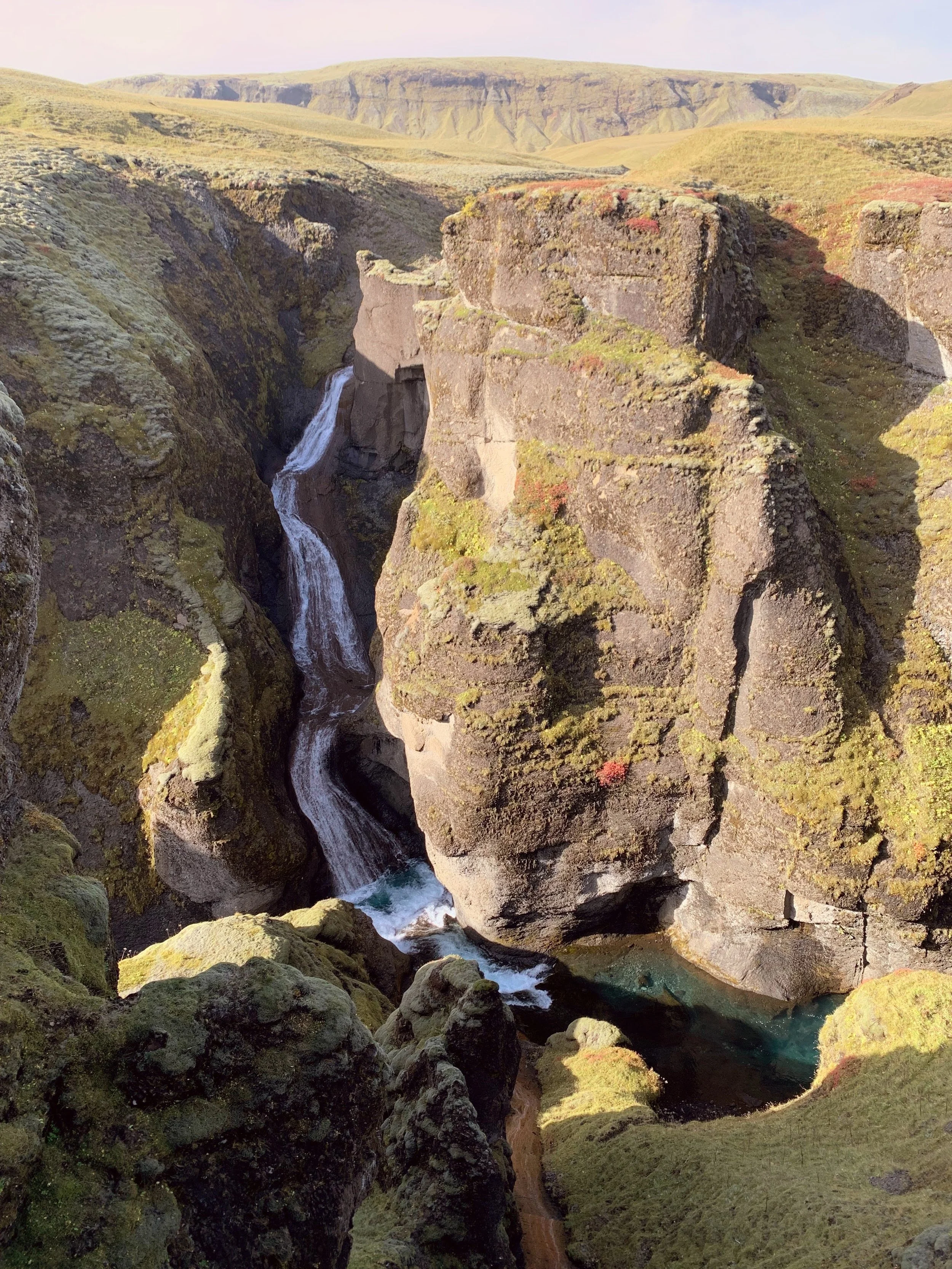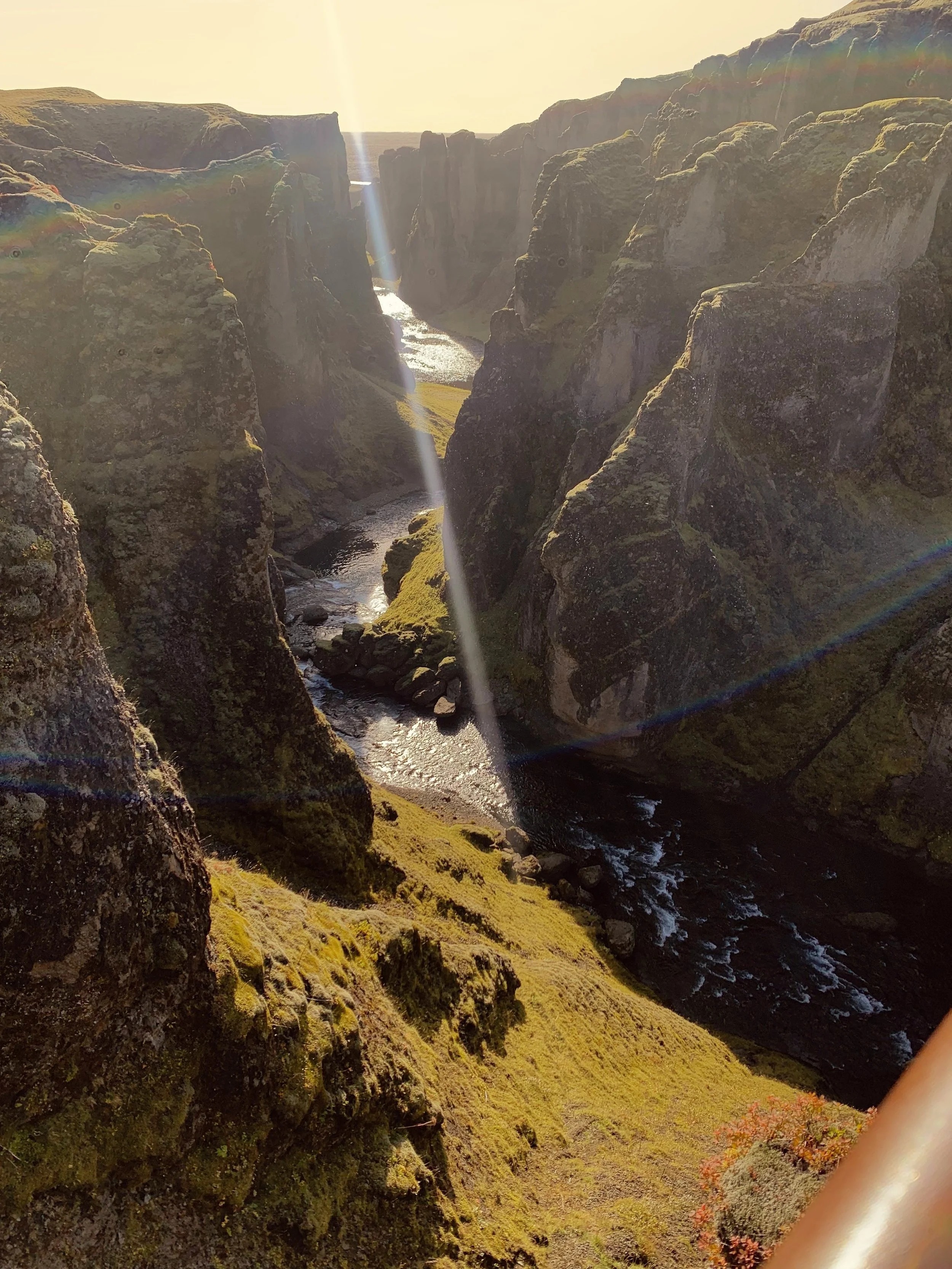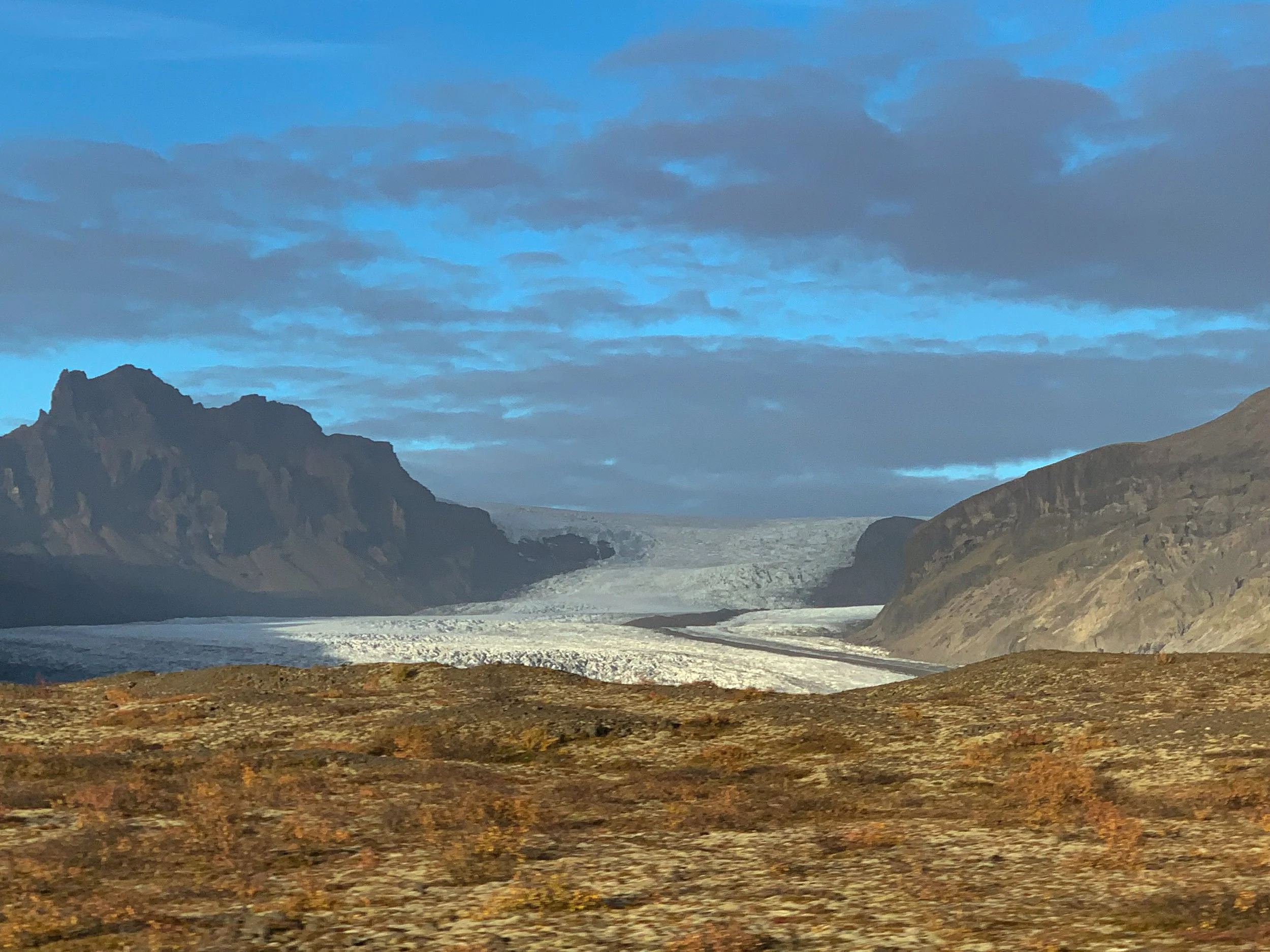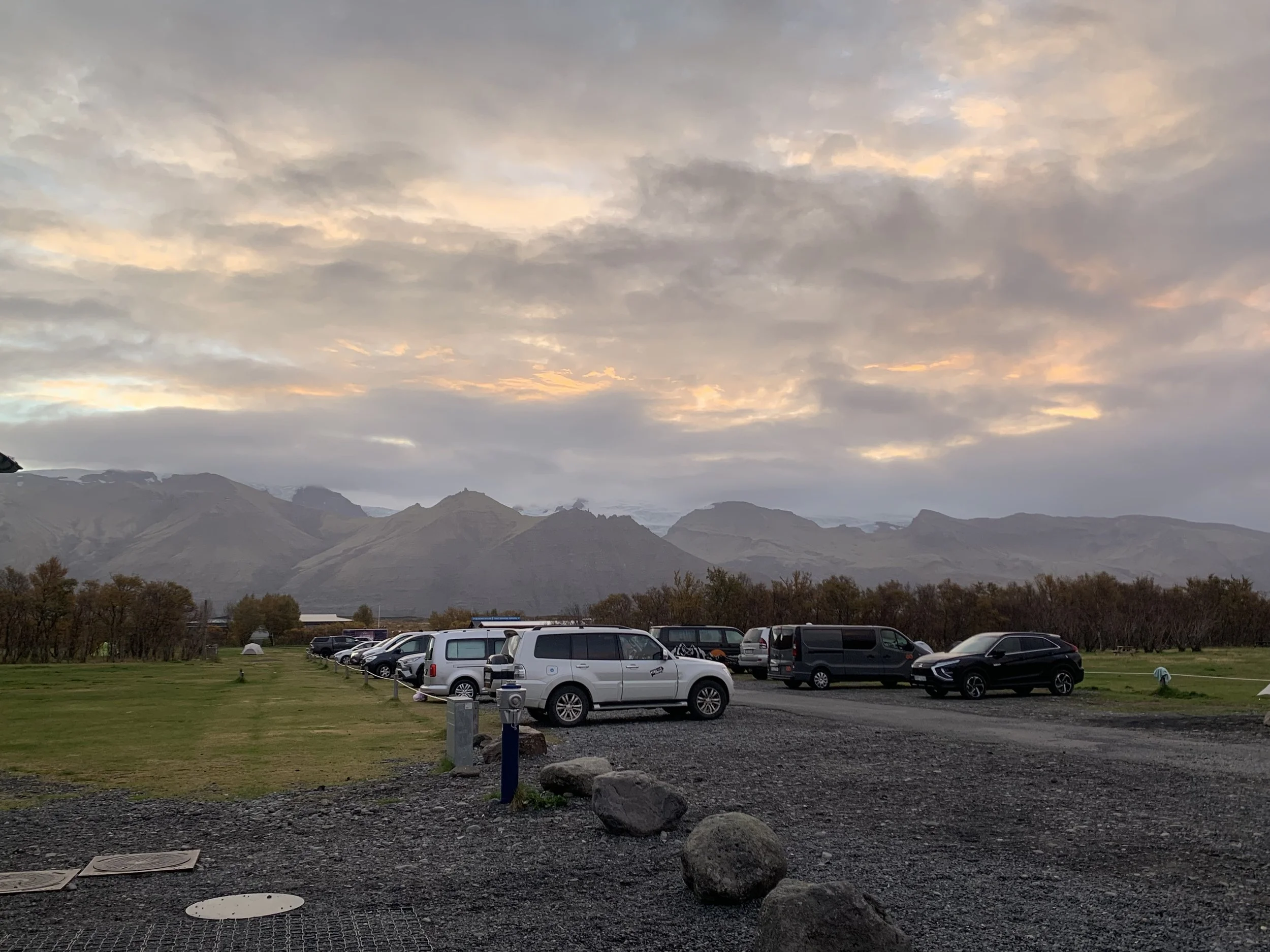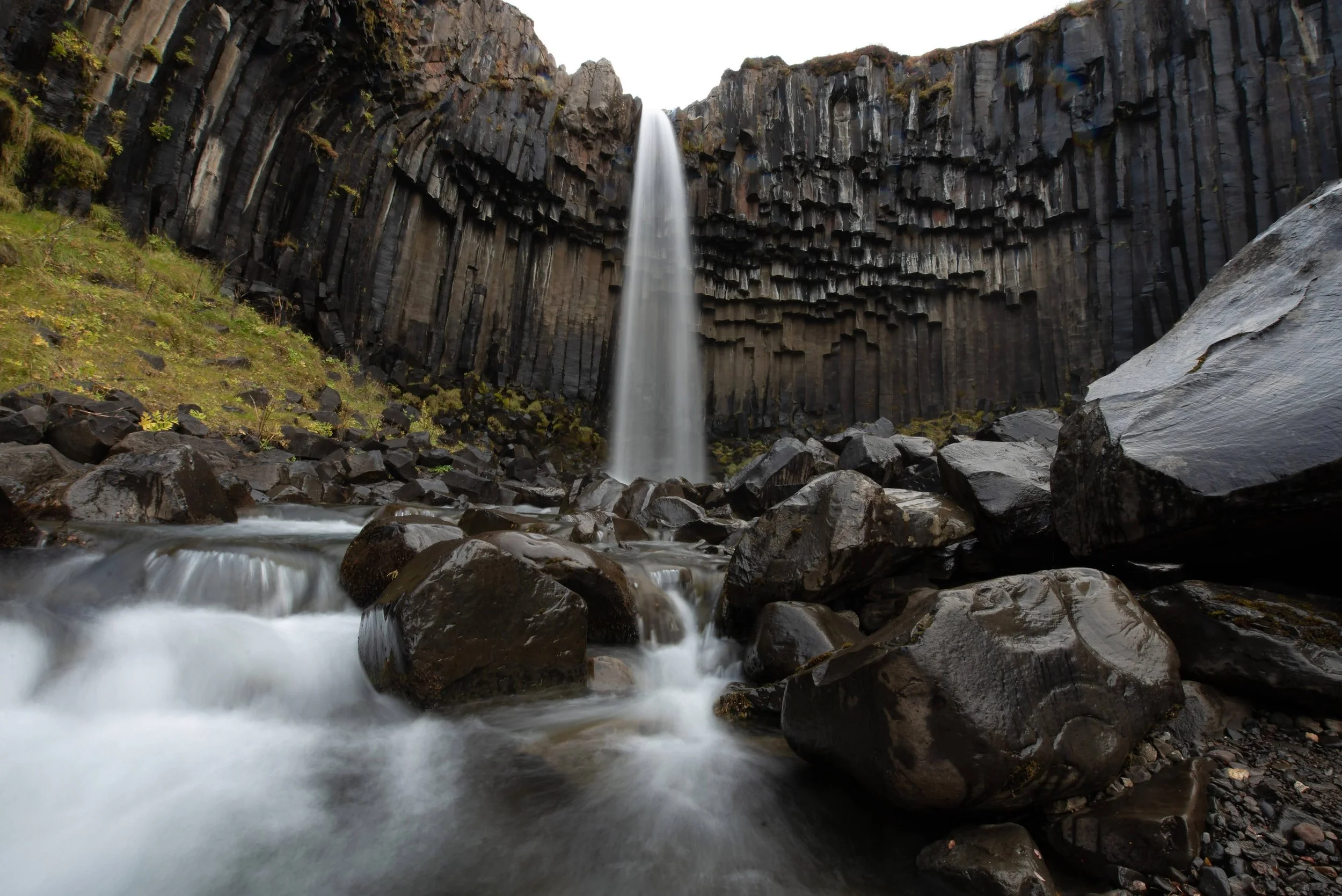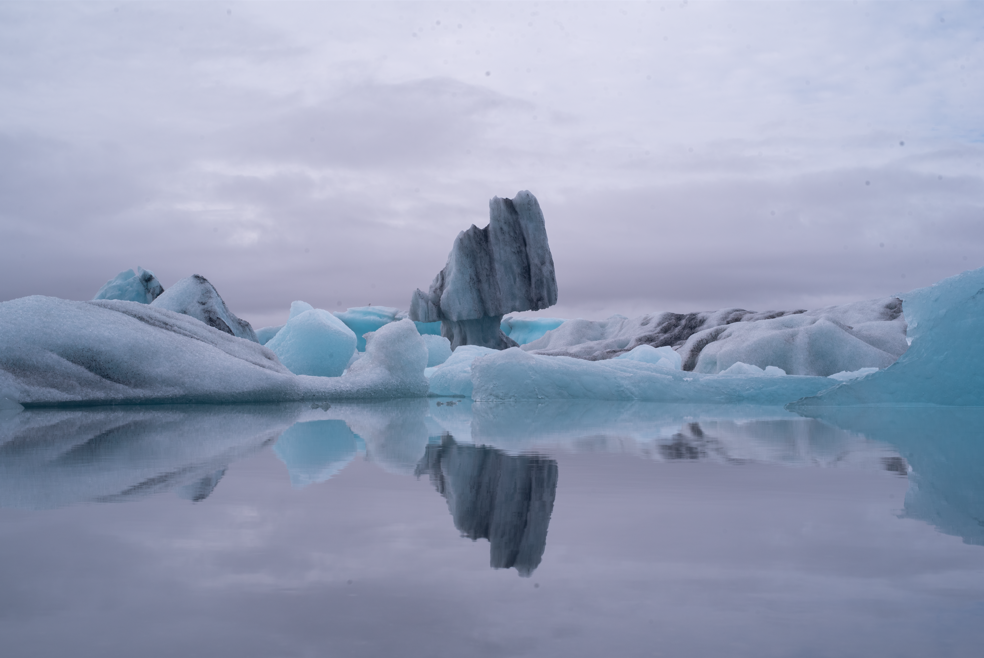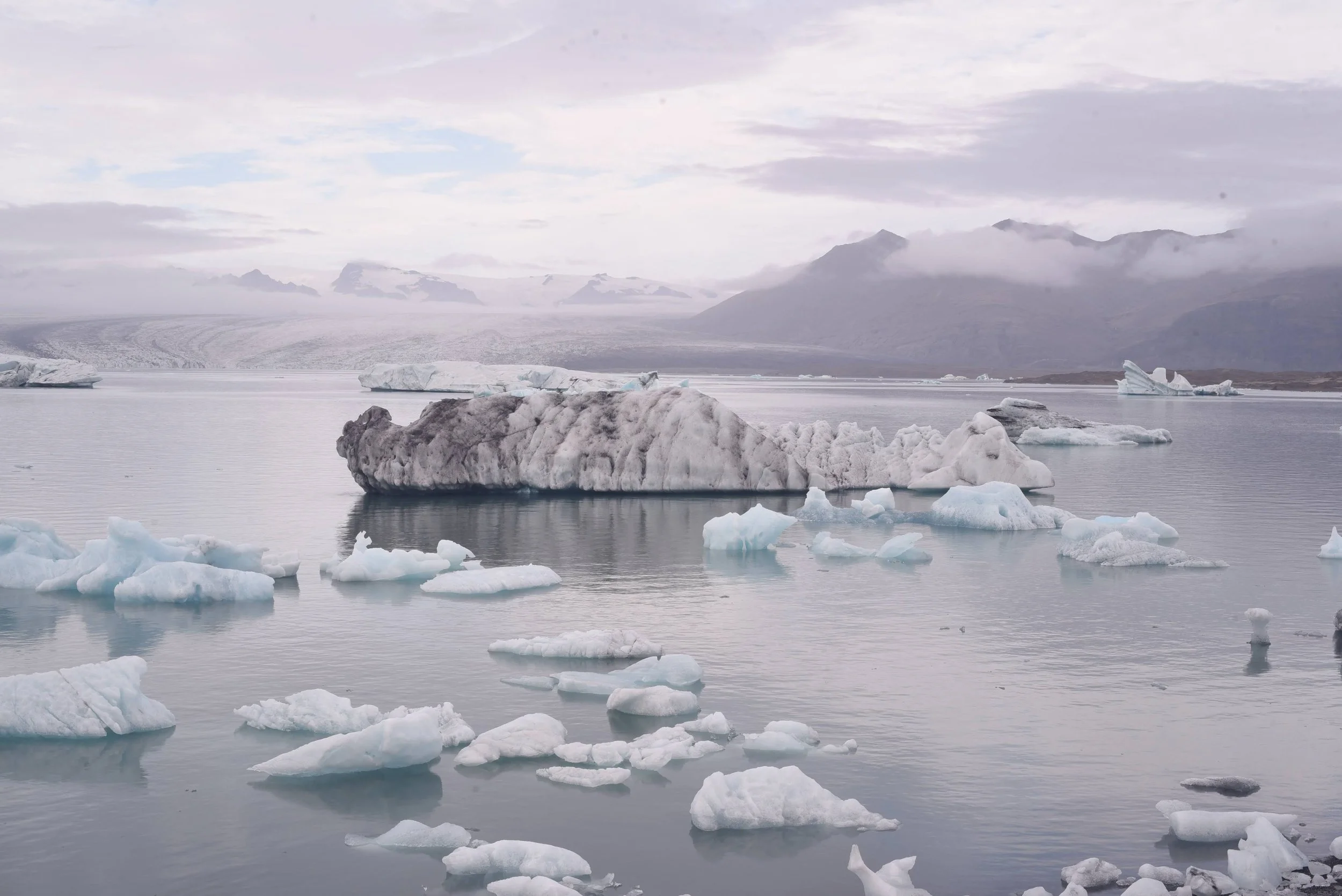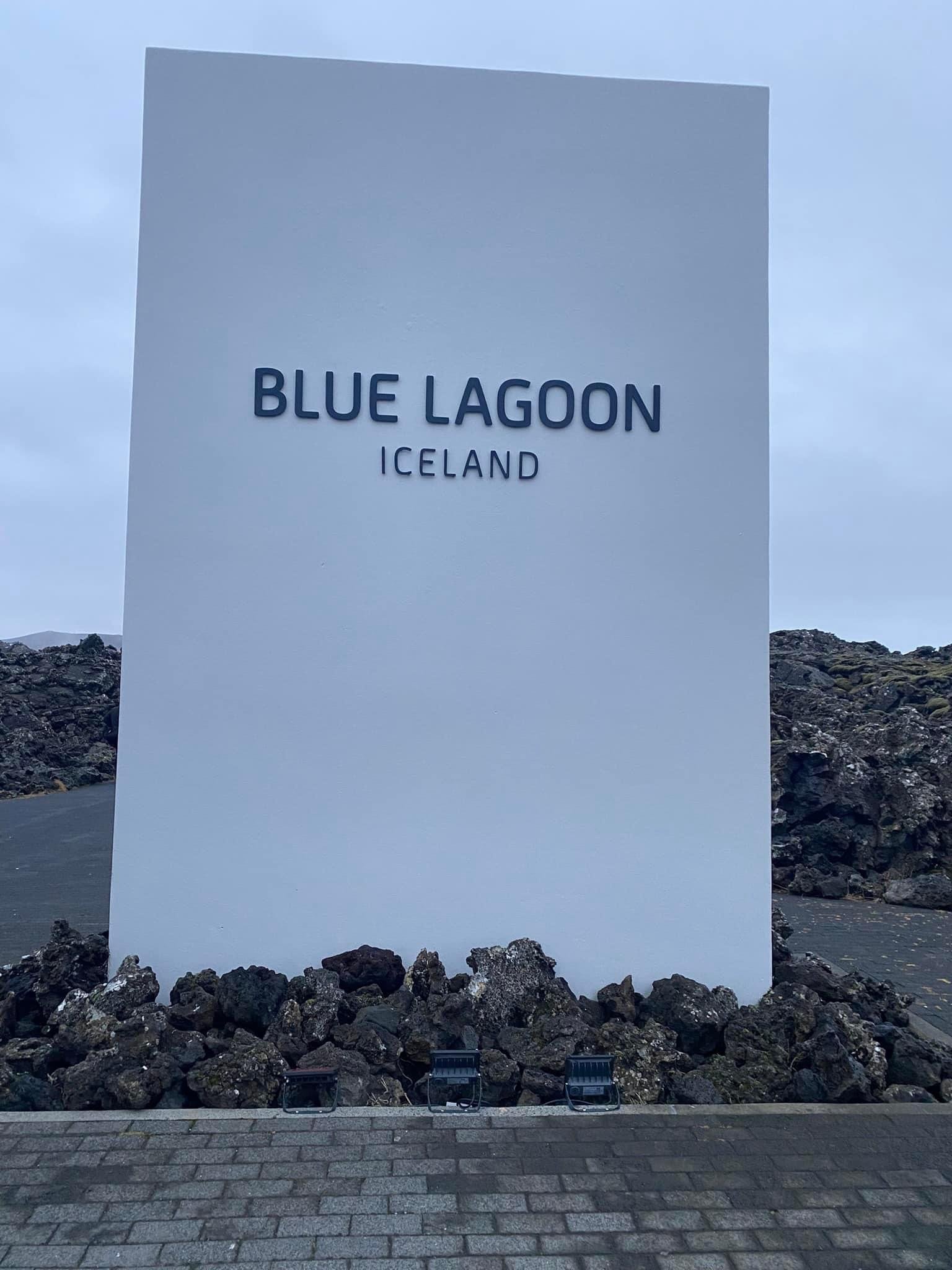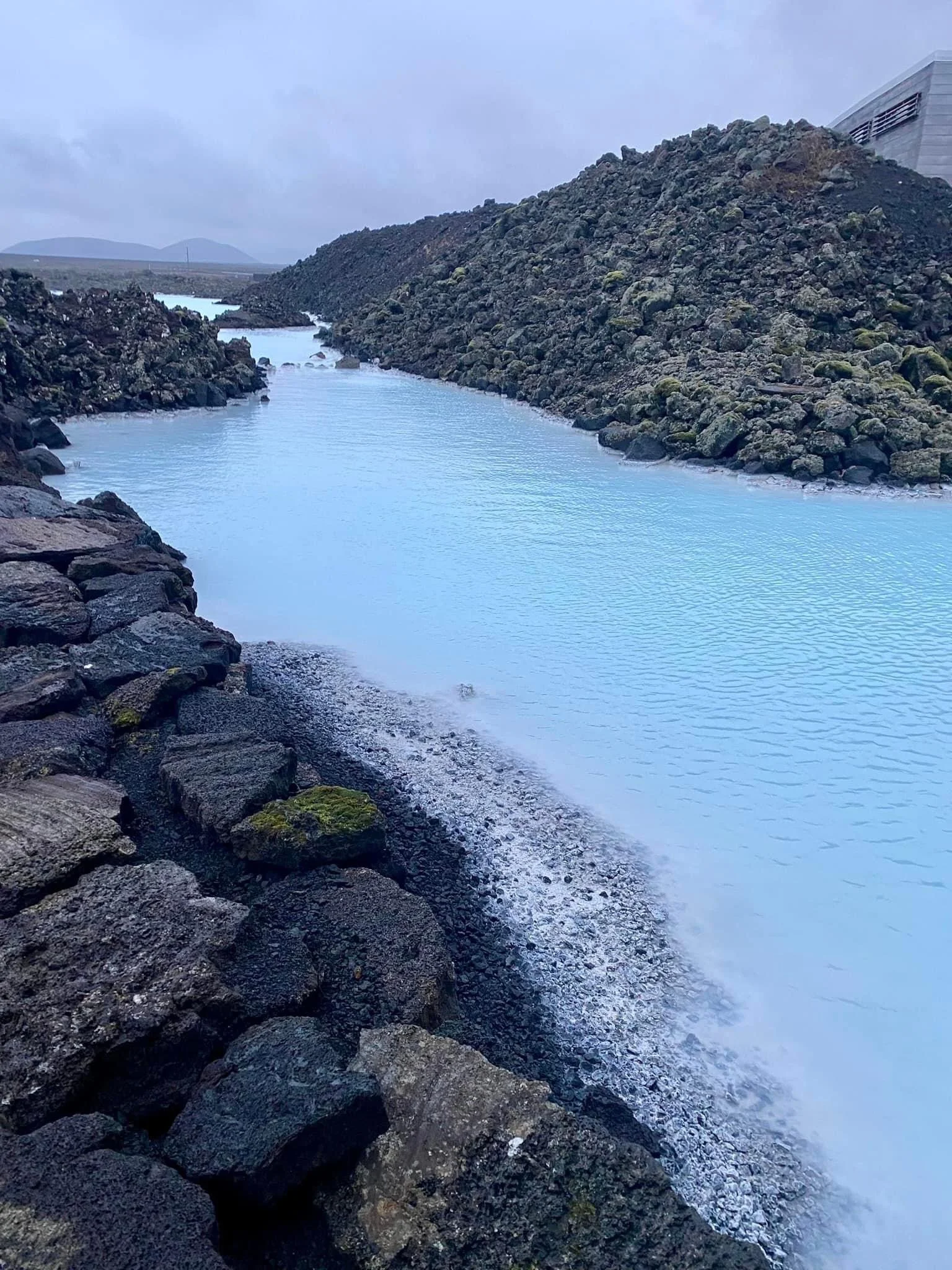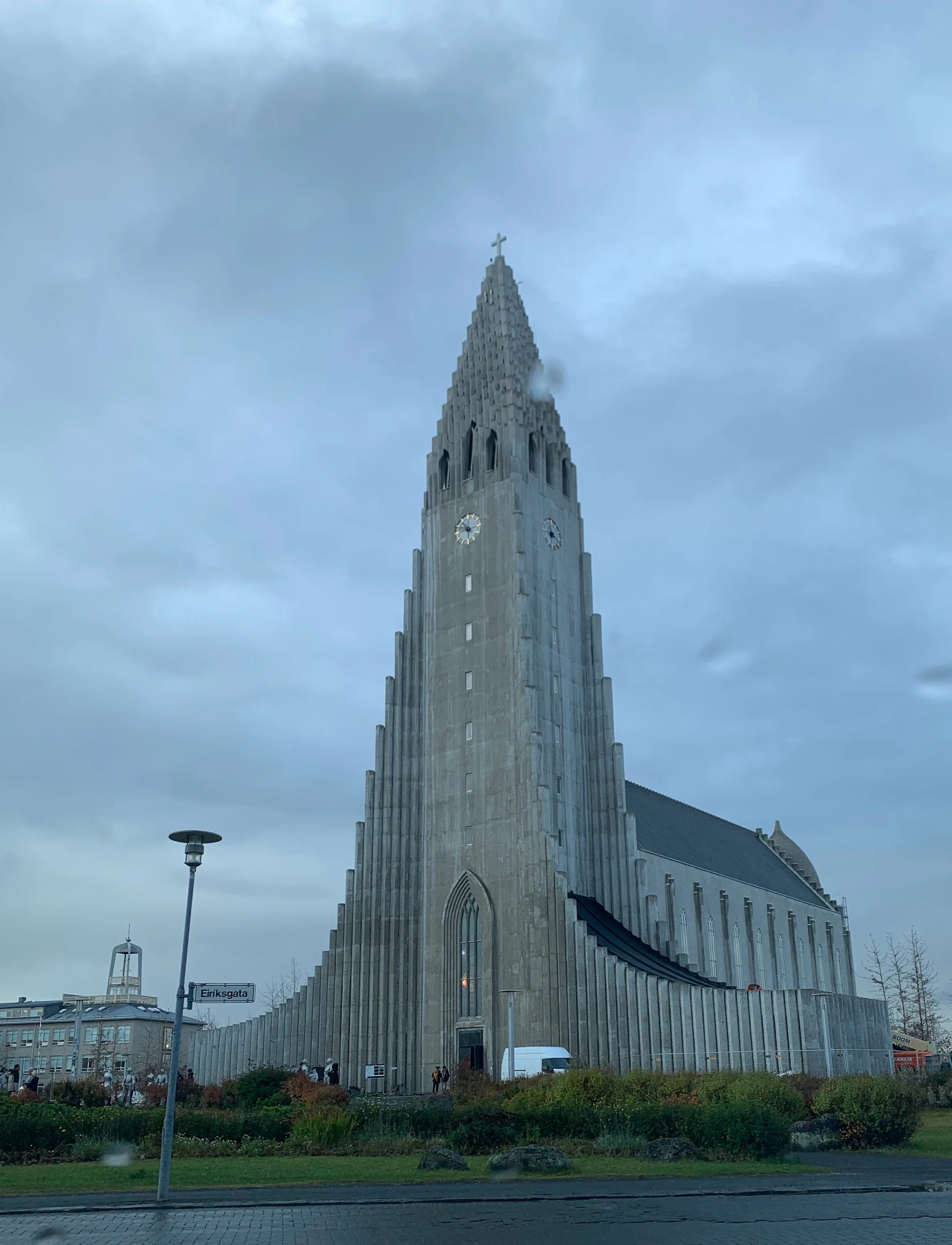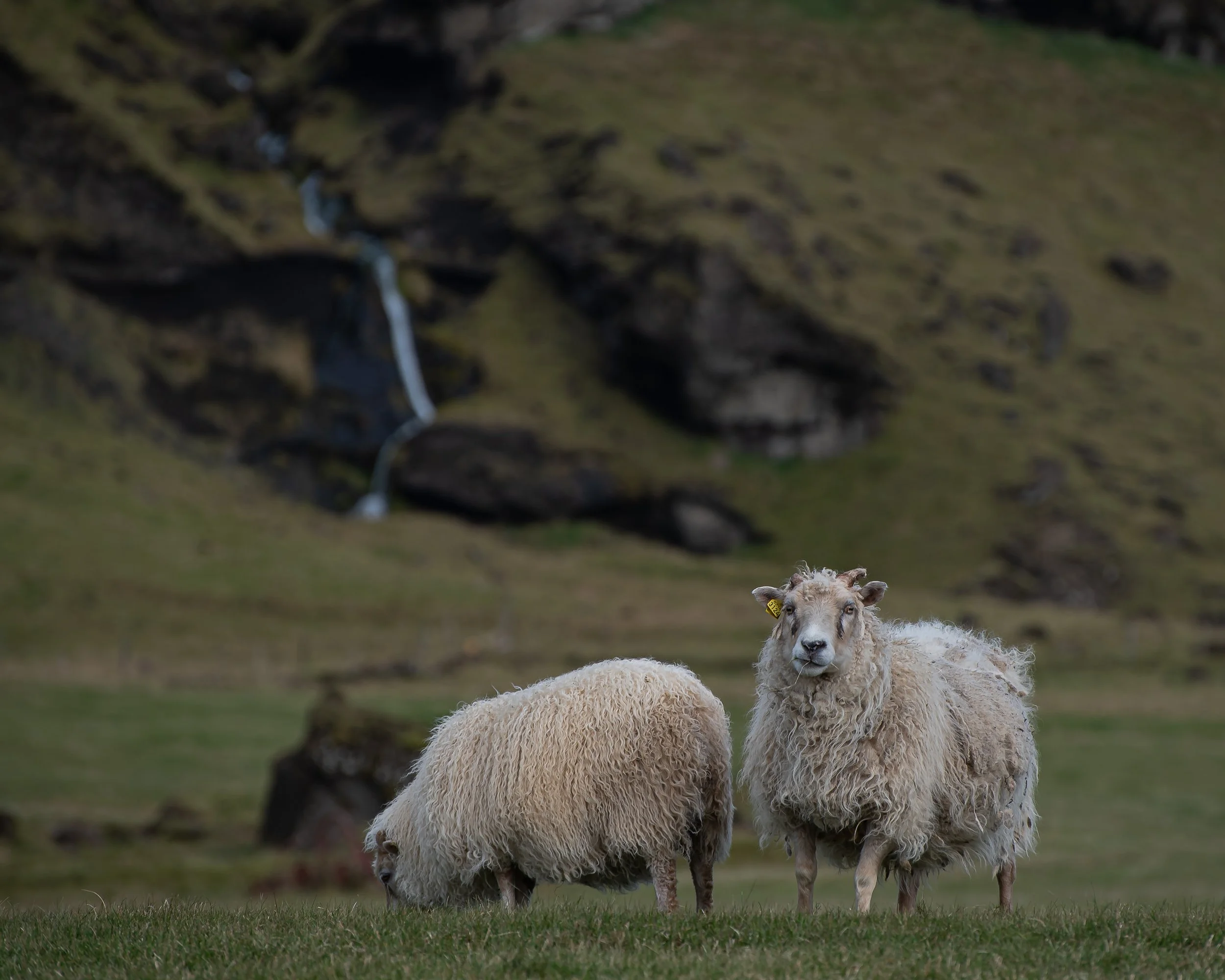10 Must-See Stops in Iceland
If you have been dreaming of exploring the natural wonder that is Iceland and want to know what stops to include on your itinerary, I have you covered! Whether you're taking on a road trip along the famed Ring Road or exploring the vibrant capital city of Reykjavik and its surroundings, here are some of the must-see stops to make your Icelandic adventure truly unforgettable. I have broken them down into regions for easier planning.
1. The Golden Circle
The Golden Circle is Iceland's most renowned tourist route, offering a glimpse into a few of the country's geological marvels:
Silfra Fissure: If you want to see where two continents meet, stop here! For an even more adventurous option, I highly recommend either a dive or snorkel in the crystal-clear waters of Silfra, where the continental plates meet. This experience offers unparalleled visibility in the glacial water and a chance to experience the unique underwater landscape.
Geysir Geothermal Area: Witness the impressive eruptions of the Strokkur geyser amidst bubbling hot springs and steaming vents. It erupts every 6-10.
Gullfoss Waterfall: Experience the sheer power and beauty of Iceland's most iconic waterfall as it plunges into a narrow canyon, often adorned with rainbows.
Kerið Crater: This beautiful blue wonder, which is part of the Western Volcanic Zone (which also includes Reykjanes peninsula and the Langjökull Glacier) is 6,500 years old and is one of the three most recognizable volcanic craters in Iceland. The crater is approximately 55 m deep, 170 m wide, and 270 m across, and is made up of a unique red volcanic rock.
2. The Snæfellsnes Peninsula & West Iceland
The Snæfellsnes Peninsula is a narrow peninsula extending from western Iceland into the North Atlantic Ocean. It has some of Iceland’s most dramatic landscapes and a diverse range of Iceland's natural wonders.
Kirkjufell and Kirkjufellsfoss waterfall: The Kirkjufell “church mountain” rises from the ocean as a backdrop for the Kirkjufellsfoss waterfall, one of the most photographed locations in Iceland. We were there during tropical storm Henri so the wind was crazy, the rain was coming down hard, and we were drenched. But it was still absolutely beautiful.
Búðakirkja: On the south side of the Snæfellsnes Peninsula, Búðakirkja is a charming little church with a history dating back to 1703. This striking black church is another one of Iceland’s most photographed landmarks and is till in operation today. It also features a historic graveyard.
3. Vik and Reynisfjara Beach
Vik is a coastal village in southern Iceland, nestled beneath the Mýrdalsjökull glacier, which blankets the Katla volcano. The village is home to Reyniskirkja, a charming wooden church built in 1929. Nearby, Reynisfjara Beach captivates visitors with its striking black pebbles, dramatic basalt columns, and the towering Reynisdrangar sea stacks just offshore.
4. Skógafoss
Skógafoss is one of Iceland’s most breathtaking waterfalls, plunging 60 meters (197 feet) over a dramatic cliff along the Skógá River. Located on the country’s southern coast, it creates a mist so dense that you will frequently see multiple rainbows on sunny days. You can view the waterfall from below or climb a steep staircase to a viewing platform for a stunning panoramic perspective. There is also a legend that Skógafoss has a buried treasure chest behind its curtain of water, but unfortunately, we didn’t find it.
5. Fjaðrárgljúfur Canyon
Fjaðrárgljúfur is honestly breathtaking! This canyon in southeast Iceland is just northeast of Vik with the Fjaðrá River running through its steep cliffs. This stop is underrated in my opinion and was one of my favorites. I will say it is a bit of a walk from the parking lot to the main viewing points, but the scenery along the way is worth it.
6. Stjórnarfoss
Stjórnarfoss waterfall is a beautiful waterfall on Iceland’s South Coast. We decided to take a detour to this waterfall while driving to our next destination on the Ring Road, and I am so happy we did! We had the place all to ourselves for over an hour, and it was so peaceful. I definitely recommend the detour as it was right off the road, crowd-free, and easy to walk to from the parking lot.
7. Vatnajökull National Park
Vatnajökull National Park is one of Europe’s largest national parks and home to Iceland’s massive Vatnajökull glacier. This park has everything from glaciers and volcanoes to waterfalls and lush valleys. Visitors can also explore ice caves, hike scenic trails, see Icelandic wildlife, and chase some gorgeous waterfalls.
Skaftafell: Skaftafell, part of Vatnajökull National Park in Iceland, is a nature reserve known for its diverse landscapes, including glaciers, waterfalls, and lush greenery. Skaftafell serves as a gateway to Vatnajökull, Europe’s largest glacier, offering incredible views and outdoor adventures. We chose to camp here for one of our nights in Iceland so we could catch the Northern Lights and take a sunrise hike to what became our favorite waterfall.
Svartifoss: Svartifoss is a stunning waterfall located in Skaftafell at the gateway to Vatnajökull National Park in Iceland. Known for its unique, dark basalt column formations, the waterfall plunges 20 meters into a beautiful pool below. This is my favorite waterfall in Iceland. The 2mi (roundtrip) hike to this waterfall is rocky and uphill most of the way with very narrow trail points at times, but the view at the top is worth it. If you do hike up, make sure you are wearing good shoes and know that it takes about 45 minutes each way.
Hundafoss: Don’t confuse this waterfall with falls of the same name near the Dynjandi waterfall in the Westfjords, the Hundafoss waterfall in South Iceland is part of the Skaftafell Nature Reserve in Vatnajokull National Park. This was a fun surprise and a nice spot for a break on the hike up to Svartifoss.
8. Jokulsarlon and Fellsfjara
Located on the southeast coast of Iceland, these two spots are right next to one another. The setting is one of the most famous spots to photograph not only in Iceland but in the world. It is worth the crowds to see this stunning work of nature.
Jökulsárlón Glacier Lagoon: Jökulsárlón is a glacial lagoon located on the edge of Vatnajökull National Park in southeastern Iceland. Its bright blue waters are filled with icebergs calved from the nearby Breiðamerkurjökull Glacier, which is a part of the larger Vatnajökull Glacier. The lagoon connects to the Atlantic Ocean via a short waterway, where it deposits ice chunks along a striking black sand beach. I knew this spot was going to be breathtaking, but there is no way to describe how insignificant you feel when you are standing there.
Diamond Beach: Also known as Fellsfjara, Diamond Beach is a stunning black sand beach located next to Jökulsárlón Glacier Lagoon. Walk amidst sparkling, diamond-shaped ice chunks and giant ice boulders that have washed ashore from the nearby Breiðamerkurjökull Glacier, and watch as other ice burgs make their way through the lagoon and are set free to sail the ocean. We also got to see friendly sea lions swimming near the shore.
9. The Blue Lagoon
I know, I know…the Blue Lagoon is a major tourist attraction, but it is honestly worth the hype. This geothermal spa not far from Reykjavik is nestled within a lava field 5 km from Grindavík on the Reykjanes Peninsula. Known for its stunning blue waters, toffers a serene and relaxing atmosphere, making it a perfect retreat. The lagoon is supplied by water from the nearby Svartsengi geothermal power station, which enhances the rejuvenating experience of this natural oasis.
10. Reykjavik
A trip to Iceland wouldn’t be complete without exploring its capital city. There is so much to do here that you could spend a whole week in Reykjavik alone, but we didn’t have that long so we just hit some of the highlights.
Hallgrímskirkja: Hallgrímskirkja is an iconic Lutheran church known for its striking, modernist design inspired by Iceland’s basalt lava columns. Standing at 74.5 meters (244 feet), it is the tallest church in the country and offers breathtaking panoramic views from its tower. Designed by architect Guðjón Samúelsson and completed in 1986, the church is named after the 17th-century poet and clergyman Hallgrímur Pétursson.
Reykjavík Maritime Museum: The Icelandic Maritime Museum, located in Reykjavík’s historic harbor, shows how important the sea and maritime trades were and are to Iceland and its history. Through interactive exhibits, historical artifacts, and impressive displays, you can explore the nation’s seafaring heritage—from Viking voyages to modern fishing industries.
Unique and Honorable Mentions
The Icelandic Phallological Museum: Before you cringe, please know that I too raised an eyebrow at the thought of visiting, but it was actually very scientific and interesting. With more than 200 penises & penile parts representing almost all Icelandic land & sea mammals, they have the largest collection of members in the world.
The Icelandic Sheep: I took more photos of the cute sheep than I want to admit. I couldn’t help it!


